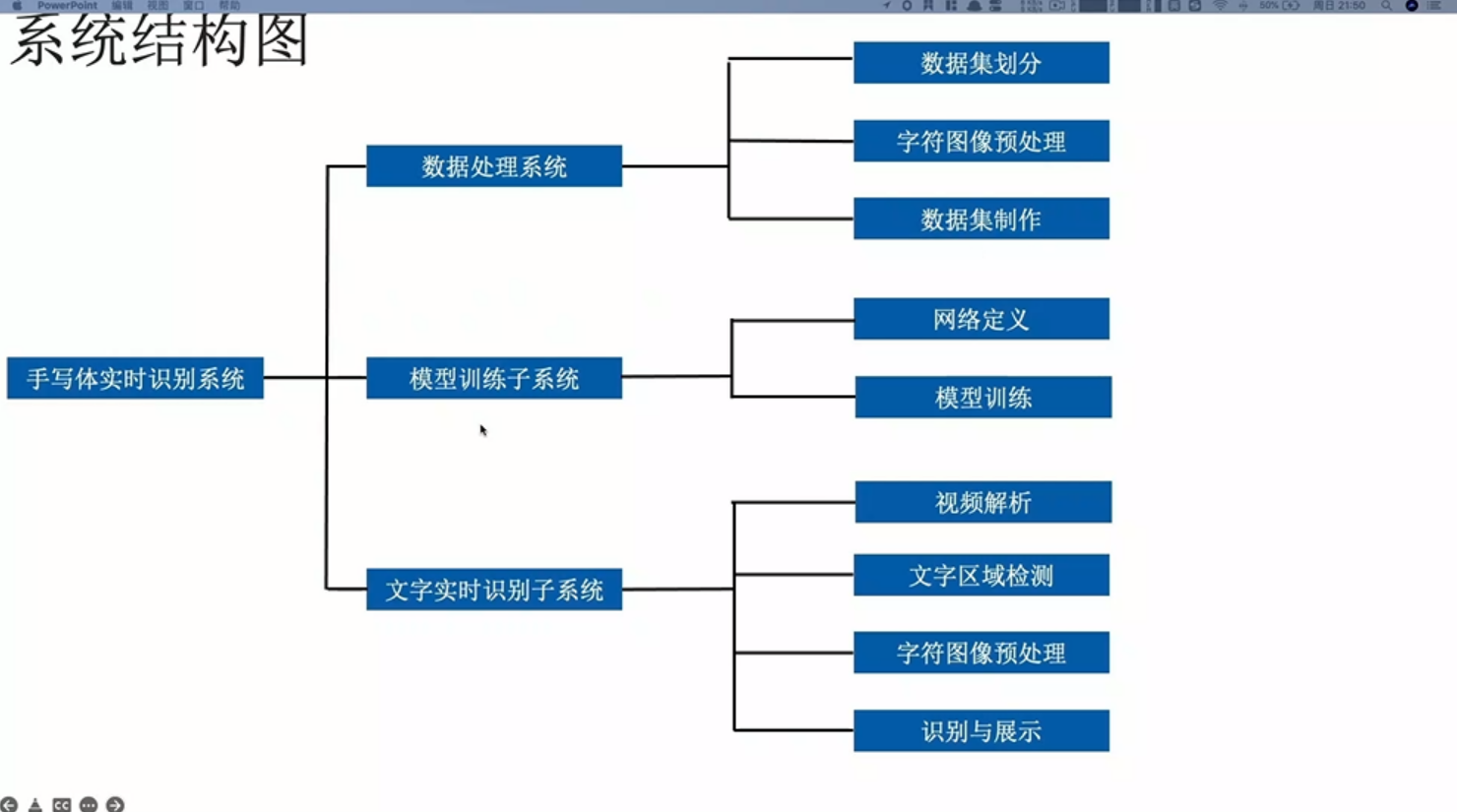源碼詳解,目標追蹤DeepSort工作流程
導讀目標跟蹤是計算機視覺領域研究的一個熱點問題,其利用視頻或圖像序列的上下文信息,對目標的外觀和運動信息進行建模,從而對目標運動狀態進行預測并標定目標的位置。本文介紹了目標追蹤算法DeepSORT的工作流程,值得各位讀者收藏閱讀。
本文首先將介紹在目標跟蹤任務中常用的匈牙利算法(Hungarian Algorithm)和卡爾曼濾波(Kalman Filter),然后介紹經典算法DeepSORT的工作流程以及對相關源碼進行解析。
目前主流的目標跟蹤算法都是基于Tracking-by-Detecton策略,即基于目標檢測的結果來進行目標跟蹤。DeepSORT運用的就是這個策略,上面的視頻是DeepSORT對人群進行跟蹤的結果,每個bbox左上角的數字是用來標識某個人的唯一ID號。這里就有個問題,視頻中不同時刻的同一個人,位置發生了變化,那么是如何關聯上的呢?答案就是匈牙利算法和卡爾曼濾波。
匈牙利算法可以告訴我們當前幀的某個目標,是否與前一幀的某個目標相同。
卡爾曼濾波可以基于目標前一時刻的位置,來預測當前時刻的位置,并且可以比傳感器(在目標跟蹤中即目標檢測器,比如Yolo等)更準確的估計目標的位置。
1匈牙利算法(Hungarian Algorithm)首先,先介紹一下什么是分配問題(Assignment Problem):假設有N個人和N個任務,每個任務可以任意分配給不同的人,已知每個人完成每個任務要花費的代價不盡相同,那么如何分配可以使得總的代價最小。舉個例子,假設現在有3個任務,要分別分配給3個人,每個人完成各個任務所需代價矩陣(cost matrix)如下所示(這個代價可以是金錢、時間等等):
怎樣才能找到一個最優分配,使得完成所有任務花費的代價最小呢?匈牙利算法(又叫KM算法)就是用來解決分配問題的一種方法,它基于定理:
如果代價矩陣的某一行或某一列同時加上或減去某個數,則這個新的代價矩陣的最優分配仍然是原代價矩陣的最優分配。
算法步驟(假設矩陣為NxN方陣):
對于矩陣的每一行,減去其中最小的元素
對于矩陣的每一列,減去其中最小的元素
用最少的水平線或垂直線覆蓋矩陣中所有的0
如果線的數量等于N,則找到了最優分配,算法結束,否則進入步驟5
找到沒有被任何線覆蓋的最小元素,每個沒被線覆蓋的行減去這個元素,每個被線覆蓋的列加上這個元素,返回步驟3
繼續拿上面的例子做演示:step1 每一行最小的元素分別為15、20、20,減去得到:
step2 每一列最小的元素分別為0、20、5,減去得到:step3 用最少的水平線或垂直線覆蓋所有的0,得到:
step4 線的數量為2,小于3,進入下一步;step5 現在沒被覆蓋的最小元素是5,沒被覆蓋的行(第一和第二行)減去5,得到:
被覆蓋的列(第一列)加上5,得到:
跳轉到step3,用最少的水平線或垂直線覆蓋所有的0,得到:
step4:線的數量為3,滿足條件,算法結束。顯然,將任務2分配給第1個人、任務1分配給第2個人、任務3分配給第3個人時,總的代價最小(0+0+0=0):
所以原矩陣的最小總代價為(40+20+25=85):
sklearn里的linear_assignment()函數以及scipy里的linear_sum_assignment()函數都實現了匈牙利算法,兩者的返回值的形式不同:
import numpy as np
from sklearn.utils.linear_assignment_ import linear_assignment
from scipy.optimize import linear_sum_assignment
cost_matrix = np.array([
[15,40,45],
[20,60,35],
[20,40,25]
])
matches = linear_assignment(cost_matrix)
print('sklearn API result:\n', matches)
matches = linear_sum_assignment(cost_matrix)
print('scipy API result:\n', matches)
"""Outputs
sklearn API result:
[[0 1]
[1 0]
[2 2]]
scipy API result:
(array([0, 1, 2], dtype=int64), array([1, 0, 2], dtype=int64))
"""
在DeepSORT中,匈牙利算法用來將前一幀中的跟蹤框tracks與當前幀中的檢測框detections進行關聯,通過外觀信息(appearance information)和馬氏距離(Mahalanobis distance),或者IOU來計算代價矩陣。源碼解讀:
# linear_assignment.py
def min_cost_matching(distance_metric, max_distance, tracks, detections,
track_indices=None, detection_indices=None):
...
# 計算代價矩陣
cost_matrix = distance_metric(tracks, detections, track_indices, detection_indices)
cost_matrix[cost_matrix > max_distance] = max_distance + 1e-5
# 執行匈牙利算法,得到匹配成功的索引對,行索引為tracks的索引,列索引為detections的索引
row_indices, col_indices = linear_assignment(cost_matrix)
matches, unmatched_tracks, unmatched_detections = [], [], []
# 找出未匹配的detections
for col, detection_idx in enumerate(detection_indices):
if col not in col_indices:
unmatched_detections.append(detection_idx)
# 找出未匹配的tracks
for row, track_idx in enumerate(track_indices):
if row not in row_indices:
unmatched_tracks.append(track_idx)
# 遍歷匹配的(track, detection)索引對
for row, col in zip(row_indices, col_indices):
track_idx = track_indices[row]
detection_idx = detection_indices[col]
# 如果相應的cost大于閾值max_distance,也視為未匹配成功
if cost_matrix[row, col] > max_distance:
unmatched_tracks.append(track_idx)
unmatched_detections.append(detection_idx)
else:
matches.append((track_idx, detection_idx))
return matches, unmatched_tracks, unmatched_detections
2卡爾曼濾波(Kalman Filter)卡爾曼濾波被廣泛應用于無人機、自動駕駛、衛星導航等領域,簡單來說,其作用就是基于傳感器的測量值來更新預測值,以達到更精確的估計。假設我們要跟蹤小車的位置變化,如下圖所示,藍色的分布是卡爾曼濾波預測值,棕色的分布是傳感器的測量值,灰色的分布就是預測值基于測量值更新后的最優估計。
Kalman Filter
在目標跟蹤中,需要估計track的以下兩個狀態:
均值(Mean):表示目標的位置信息,由bbox的中心坐標 (cx, cy),寬高比r,高h,以及各自的速度變化值組成,由8維向量表示為 x = [cx, cy, r, h, vx, vy, vr, vh],各個速度值初始化為0。
協方差(Covariance ):表示目標位置信息的不確定性,由8x8的對角矩陣表示,矩陣中數字越大則表明不確定性越大,可以以任意值初始化。
卡爾曼濾波分為兩個階段:(1) 預測track在下一時刻的位置,(2) 基于detection來更新預測的位置。下面將介紹這兩個階段用到的計算公式。(這里不涉及公式的原理推導,因為我也不清楚原理(?_?) ,只是說明一下各個公式的作用)預測
基于track在t-1時刻的狀態來預測其在t時刻的狀態。
在公式1中,x為track在t-1時刻的均值,F稱為狀態轉移矩陣,該公式預測t時刻的x':
矩陣F中的dt是當前幀和前一幀之間的差,將等號右邊的矩陣乘法展開,可以得到cx'=cx+dt*vx,cy'=cy+dt*vy...,所以這里的卡爾曼濾波是一個勻速模型(Constant Velocity Model)。在公式2中,P為track在t-1時刻的協方差,Q為系統的噪聲矩陣,代表整個系統的可靠程度,一般初始化為很小的值,該公式預測t時刻的P'。源碼解讀:
# kalman_filter.py
def predict(self, mean, covariance):
"""Run Kalman filter prediction step.
Parameters
----------
mean: ndarray, the 8 dimensional mean vector of the object state at the previous time step.
covariance: ndarray, the 8x8 dimensional covariance matrix of the object state at the previous time step.
Returns
-------
(ndarray, ndarray), the mean vector and covariance matrix of the predicted state.
Unobserved velocities are initialized to 0 mean.
"""
std_pos = [
self._std_weight_position * mean[3],
self._std_weight_position * mean[3],
1e-2,
self._std_weight_position * mean[3]]
std_vel = [
self._std_weight_velocity * mean[3],
self._std_weight_velocity * mean[3],
1e-5,
self._std_weight_velocity * mean[3]]
motion_cov = np.diag(np.square(np.r_[std_pos, std_vel])) # 初始化噪聲矩陣Q
mean = np.dot(self._motion_mat, mean) # x' = Fx
covariance = np.linalg.multi_dot((self._motion_mat, covariance, self._motion_mat.T)) + motion_cov # P' = FPF(T) + Q
return mean, covariance
更新基于t時刻檢測到的detection,校正與其關聯的track的狀態,得到一個更精確的結果。在公式3中,z為detection的均值向量,不包含速度變化值,即z=[cx, cy, r, h],H稱為測量矩陣,它將track的均值向量x'映射到檢測空間,該公式計算detection和track的均值誤差;在公式4中,R為檢測器的噪聲矩陣,它是一個4x4的對角矩陣,對角線上的值分別為中心點兩個坐標以及寬高的噪聲,以任意值初始化,一般設置寬高的噪聲大于中心點的噪聲,該公式先將協方差矩陣P'映射到檢測空間,然后再加上噪聲矩陣R;公式5計算卡爾曼增益K,卡爾曼增益用于估計誤差的重要程度;公式6和公式7得到更新后的均值向量x和協方差矩陣P。源碼解讀:
# kalman_filter.py
def project(self, mean, covariance):
"""Project state distribution to measurement space.
Parameters
----------
mean: ndarray, the state's mean vector (8 dimensional array).
covariance: ndarray, the state's covariance matrix (8x8 dimensional).
Returns
-------
(ndarray, ndarray), the projected mean and covariance matrix of the given state estimate.
"""
std = [self._std_weight_position * mean[3],
self._std_weight_position * mean[3],
1e-1,
self._std_weight_position * mean[3]]
innovation_cov = np.diag(np.square(std)) # 初始化噪聲矩陣R
mean = np.dot(self._update_mat, mean) # 將均值向量映射到檢測空間,即Hx'
covariance = np.linalg.multi_dot((
self._update_mat, covariance, self._update_mat.T)) # 將協方差矩陣映射到檢測空間,即HP'H^T
return mean, covariance + innovation_cov
def update(self, mean, covariance, measurement):
"""Run Kalman filter correction step.
Parameters
----------
mean: ndarra, the predicted state's mean vector (8 dimensional).
covariance: ndarray, the state's covariance matrix (8x8 dimensional).
measurement: ndarray, the 4 dimensional measurement vector (x, y, a, h), where (x, y) is the
center position, a the aspect ratio, and h the height of the bounding box.
Returns
-------
(ndarray, ndarray), the measurement-corrected state distribution.
"""
# 將mean和covariance映射到檢測空間,得到Hx'和S
projected_mean, projected_cov = self.project(mean, covariance)
# 矩陣分解(這一步沒看懂)
chol_factor, lower = scipy.linalg.cho_factor(projected_cov, lower=True, check_finite=False)
# 計算卡爾曼增益K(這一步沒看明白是如何對應上公式5的,求線代大佬指教)
kalman_gain = scipy.linalg.cho_solve(
(chol_factor, lower), np.dot(covariance, self._update_mat.T).T,
check_finite=False).T
# z - Hx'
innovation = measurement - projected_mean
# x = x' + Ky
new_mean = mean + np.dot(innovation, kalman_gain.T)
# P = (I - KH)P'
new_covariance = covariance - np.linalg.multi_dot((kalman_gain, projected_cov, kalman_gain.T))
return new_mean, new_covariance
3DeepSort工作流程
DeepSORT對每一幀的處理流程如下:
檢測器得到bbox → 生成detections → 卡爾曼濾波預測→ 使用匈牙利算法將預測后的tracks和當前幀中的detecions進行匹配(級聯匹配和IOU匹配) → 卡爾曼濾波更新
Frame 0:檢測器檢測到了3個detections,當前沒有任何tracks,將這3個detections初始化為tracks
Frame 1:檢測器又檢測到了3個detections,對于Frame 0中的tracks,先進行預測得到新的tracks,然后使用匈牙利算法將新的tracks與detections進行匹配,得到(track, detection)匹配對,最后用每對中的detection更新對應的track
檢測
使用Yolo作為檢測器,檢測當前幀中的bbox:
# demo_yolo3_deepsort.py
def detect(self):
while self.vdo.grab():
...
bbox_xcycwh, cls_conf, cls_ids = self.yolo3(im) # 檢測到的bbox[cx,cy,w,h],置信度,類別id
if bbox_xcycwh is not None:
# 篩選出人的類別
mask = cls_ids == 0
bbox_xcycwh = bbox_xcycwh[mask]
bbox_xcycwh[:, 3:] *= 1.2
cls_conf = cls_conf[mask]
...
生成detections將檢測到的bbox轉換成detections:
# deep_sort.py
def update(self, bbox_xywh, confidences, ori_img):
self.height, self.width = ori_img.shape[:2]
# 提取每個bbox的feature
features = self._get_features(bbox_xywh, ori_img)
# [cx,cy,w,h] -> [x1,y1,w,h]
bbox_tlwh = self._xywh_to_tlwh(bbox_xywh)
# 過濾掉置信度小于self.min_confidence的bbox,生成detections
detections = [Detection(bbox_tlwh[i], conf, features[i]) for i,conf in enumerate(confidences) if conf > self.min_confidence]
# NMS (這里self.nms_max_overlap的值為1,即保留了所有的detections)
boxes = np.array([d.tlwh for d in detections])
scores = np.array([d.confidence for d in detections])
indices = non_max_suppression(boxes, self.nms_max_overlap, scores)
detections = [detections[i] for i in indices]
...
卡爾曼濾波預測階段使用卡爾曼濾波預測前一幀中的tracks在當前幀的狀態:
# track.py
def predict(self, kf):
"""Propagate the state distribution to the current time step using a
Kalman filter prediction step.
Parameters
----------
kf: The Kalman filter.
"""
self.mean, self.covariance = kf.predict(self.mean, self.covariance) # 預測
self.age += 1 # 該track自出現以來的總幀數加1
self.time_since_update += 1 # 該track自最近一次更新以來的總幀數加1
匹配首先對基于外觀信息的馬氏距離計算tracks和detections的代價矩陣,然后相繼進行級聯匹配和IOU匹配,最后得到當前幀的所有匹配對、未匹配的tracks以及未匹配的detections:
# tracker.py
def _match(self, detections):
def gated_metric(racks, dets, track_indices, detection_indices):
"""
基于外觀信息和馬氏距離,計算卡爾曼濾波預測的tracks和當前時刻檢測到的detections的代價矩陣
"""
features = np.array([dets[i].feature for i in detection_indices])
targets = np.array([tracks[i].track_id for i in track_indices]
# 基于外觀信息,計算tracks和detections的余弦距離代價矩陣
cost_matrix = self.metric.distance(features, targets)
# 基于馬氏距離,過濾掉代價矩陣中一些不合適的項 (將其設置為一個較大的值)
cost_matrix = linear_assignment.gate_cost_matrix(self.kf, cost_matrix, tracks,
dets, track_indices, detection_indices)
return cost_matrix
# 區分開confirmed tracks和unconfirmed tracks
confirmed_tracks = [i for i, t in enumerate(self.tracks) if t.is_confirmed()]
unconfirmed_tracks = [i for i, t in enumerate(self.tracks) if not t.is_confirmed()]
# 對confirmd tracks進行級聯匹配
matches_a, unmatched_tracks_a, unmatched_detections = \
linear_assignment.matching_cascade(
gated_metric, self.metric.matching_threshold, self.max_age,
self.tracks, detections, confirmed_tracks)
# 對級聯匹配中未匹配的tracks和unconfirmed tracks中time_since_update為1的tracks進行IOU匹配
iou_track_candidates = unconfirmed_tracks + [k for k in unmatched_tracks_a if
self.tracks[k].time_since_update == 1]
unmatched_tracks_a = [k for k in unmatched_tracks_a if
self.tracks[k].time_since_update != 1]
matches_b, unmatched_tracks_b, unmatched_detections = \
linear_assignment.min_cost_matching(
iou_matching.iou_cost, self.max_iou_distance, self.tracks,
detections, iou_track_candidates, unmatched_detections)
# 整合所有的匹配對和未匹配的tracks
matches = matches_a + matches_b
unmatched_tracks = list(set(unmatched_tracks_a + unmatched_tracks_b))
return matches, unmatched_tracks, unmatched_detections
# 級聯匹配源碼 linear_assignment.py
def matching_cascade(distance_metric, max_distance, cascade_depth, tracks, detections,
track_indices=None, detection_indices=None):
...
unmatched_detections = detection_indice
matches = []
# 由小到大依次對每個level的tracks做匹配
for level in range(cascade_depth):
# 如果沒有detections,退出循環
if len(unmatched_detections) == 0:
break
# 當前level的所有tracks索引
track_indices_l = [k for k in track_indices if
tracks[k].time_since_update == 1 + level]
# 如果當前level沒有track,繼續
if len(track_indices_l) == 0:
continue
# 匈牙利匹配
matches_l, _, unmatched_detections = min_cost_matching(distance_metric, max_distance, tracks, detections,
track_indices_l, unmatched_detections)
matches += matches_l
unmatched_tracks = list(set(track_indices) - set(k for k, _ in matches))
return matches, unmatched_tracks, unmatched_detections
卡爾曼濾波更新階段對于每個匹配成功的track,用其對應的detection進行更新,并處理未匹配tracks和detections:
def update(self, detections):
"""Perform measurement update and track management.
Parameters
----------
detections: List[deep_sort.detection.Detection]
A list of detections at the current time step.
"""
# 得到匹配對、未匹配的tracks、未匹配的dectections
matches, unmatched_tracks, unmatched_detections = self._match(detections)
# 對于每個匹配成功的track,用其對應的detection進行更新
for track_idx, detection_idx in matches:
self.tracks[track_idx].update(self.kf, detections[detection_idx])
# 對于未匹配的成功的track,將其標記為丟失
for track_idx in unmatched_tracks:
self.tracks[track_idx].mark_missed()
# 對于未匹配成功的detection,初始化為新的track
for detection_idx in unmatched_detections:
self._initiate_track(detections[detection_idx])
...
4參考[1] SIMPLE ONLINE AND REALTIME TRACKING WITH A DEEP ASSOCIATION METRIC[2] https://github.com/ZQPei/deep_sort_pytorch[3] https://towardsdatascience.com/computer-vision-for-tracking-8220759eee85
*博客內容為網友個人發布,僅代表博主個人觀點,如有侵權請聯系工作人員刪除。








